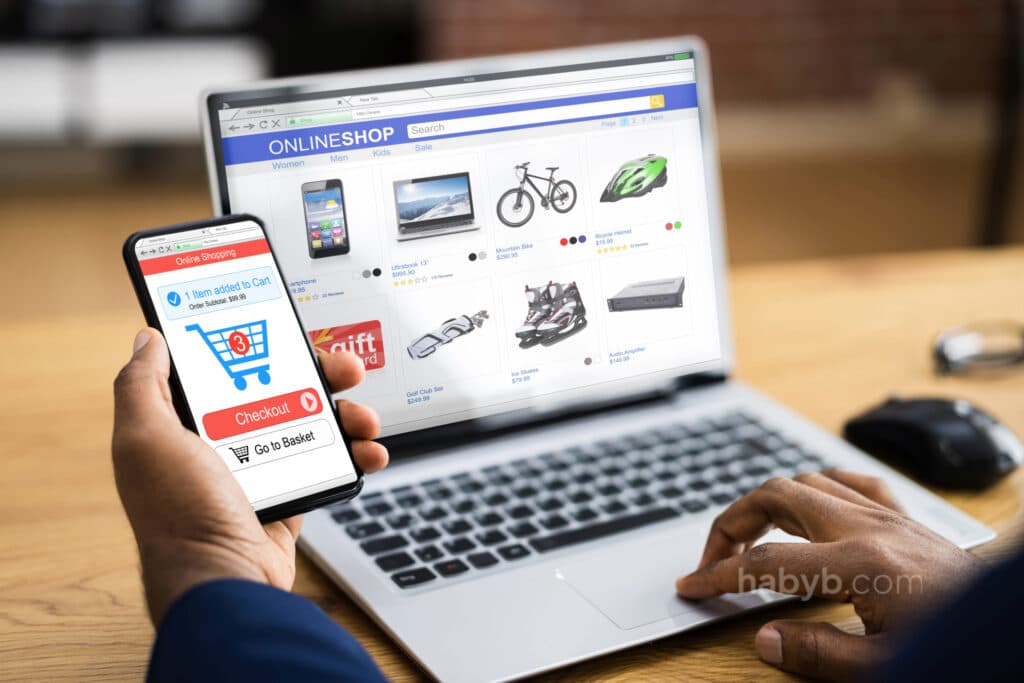Introduction
In today’s digital landscape, organic traffic is a crucial metric for website owners. It represents the number of visitors arriving at your site through unpaid search results on search engines like Google, rather than through paid advertisements or direct visits. As search engines continue to evolve, staying ahead of the trends in organic traffic is essential for maintaining and increasing your site’s visibility and attracting quality visitors.
This article aims to provide you with a comprehensive overview of the latest trends shaping organic traffic. From the rise of voice search to the importance of mobile optimization, we will explore key strategies and offer actionable insights to help you adapt and thrive in this dynamic environment. By understanding and implementing these trends, you can drive more organic traffic to your website and stay ahead of your competition.
Rise of Voice Search
The advent of voice search is revolutionizing the way users interact with search engines, and its popularity is steadily increasing. According to a report by Statista, the number of digital voice assistants in use is projected to reach 8.4 billion units by 2024, surpassing the global population. This growth is significantly impacting organic traffic as more users turn to voice-enabled devices like smartphones, smart speakers, and virtual assistants for their search queries.
Voice search queries tend to be longer and more conversational compared to traditional text searches. This shift necessitates a change in how website owners optimize their content. Here are some strategies to consider:
- Use Long-Tail Keywords: Voice searches are typically more specific. Incorporating long-tail keywords that mirror natural speech patterns can improve your rankings in search engine results pages (SERPs).
- Natural Language: Craft content that answers questions in a conversational tone. For example, instead of focusing solely on the keyword “organic traffic,” consider phrases like “What is organic traffic and why is it important?”
- FAQ Sections: Adding a Frequently Asked Questions (FAQ) section can help capture voice search queries directly, as users often ask questions in their searches.
Industry experts emphasize the importance of adapting to this trend. According to Neil Patel, a leading digital marketing expert, “Voice search is changing the SEO landscape. Optimizing for voice search means creating content that is more conversational and focused on providing clear, concise answers to common questions.”
As voice search continues to grow in popularity, it is crucial for website owners to adapt their SEO strategies accordingly. By focusing on long-tail keywords, natural language, and structured data, you can improve your site’s visibility in voice search results, thereby driving more organic traffic to your website.
Importance of Mobile Optimization
In today’s digital age, mobile optimization plays a critical role in driving organic traffic to websites. With the proliferation of smartphones and tablets, users increasingly rely on mobile devices to access information. According to a report by Statista, mobile devices accounted for approximately 54.8% of global website traffic in the first quarter of 2021. This trend underscores the necessity for websites to be mobile-friendly to capture and retain organic search traffic.
The increasing use of mobile devices has led to a shift in user behavior. People now expect seamless and efficient browsing experiences on their phones and tablets. This expectation impacts how search engines like Google rank websites. Google’s mobile-first indexing means that the mobile version of your website is considered the primary version for ranking purposes. Therefore, mobile optimization is no longer optional but a necessity for successful search engine optimization (SEO).
Here are some essential tips and strategies for optimizing your website for mobile devices:
- Responsive Design: Implement a responsive design that automatically adjusts to different screen sizes and orientations. This ensures that your website provides an optimal viewing experience across all devices.
- Fast Loading Speed: Mobile users are less patient with slow-loading pages. Use tools like Google PageSpeed Insights to analyze and improve your site’s loading speed. Compress images, leverage browser caching, and minimize redirects to enhance performance.
- Easy Navigation: Simplify navigation by using clear menus and large, clickable buttons. Ensure that users can easily find the information they need without excessive scrolling or zooming.
- Optimize Content: Ensure that your content is concise and easy to read on smaller screens. Use bullet points, short paragraphs, and subheadings to break up text and improve readability.
- Mobile-Friendly Pop-Ups: Avoid intrusive pop-ups that can frustrate mobile users. If you must use pop-ups, ensure they are easy to close and do not cover the entire screen.
Industry experts highlight the importance of mobile optimization. John Mueller, a Senior Webmaster Trends Analyst at Google, states, “Mobile-first indexing is a crucial step towards providing a better search experience for mobile users. Websites that are not mobile-friendly will struggle to rank well in search engine results.”
In conclusion, mobile optimization is essential for driving organic traffic and improving your website’s SEO performance. By implementing responsive design, enhancing loading speeds, and optimizing navigation and content, you can ensure your website meets the needs of mobile users and ranks higher in search engine results pages (SERPs).
User Experience and SEO
The connection between user experience (UX) and SEO performance is undeniable. A positive user experience not only keeps visitors engaged but also signals to search engines that your website is valuable and trustworthy. Google’s algorithm increasingly prioritizes websites that offer a seamless and satisfying user experience. Metrics such as bounce rate, dwell time, and click-through rate (CTR) are critical indicators that influence how your website ranks in search engine results pages (SERPs).
Improving user experience can significantly boost organic traffic by encouraging longer visits and higher engagement. Here are several strategies website owners can implement to enhance user experience:
- User-Friendly Interface: A clean, intuitive interface is essential for retaining visitors. Ensure your website is easy to navigate, with clear menus and a logical structure. Use a consistent design language and make sure that key information is easily accessible.
- High-Quality Content: Content is at the heart of user experience. Provide valuable, well-researched, and engaging content that meets the needs of your audience. Use a mix of text, images, and videos to keep users interested and informed.
- Page Speed: Fast-loading pages are crucial for a positive user experience. Utilize tools like Google PageSpeed Insights to assess and improve your page load times. Compress images, use a content delivery network (CDN), and minimize HTTP requests to enhance speed.
- Mobile Optimization: As previously discussed, optimizing for mobile devices is vital. Ensure your website is responsive and offers a seamless experience across all devices.
- Interactive Elements: Incorporate interactive elements such as quizzes, polls, and comment sections to engage users and encourage them to spend more time on your site.
Let’s look at some real-world examples of websites that excel in user experience and, consequently, enjoy high organic traffic:
| Website | Strategy | Result |
|---|---|---|
| Airbnb | User-friendly interface, high-quality visuals, and personalized content | Increased user engagement and high organic search rankings |
| New York Times | Fast-loading pages, high-quality journalism, and mobile optimization | Lower bounce rates and improved dwell time |
According to a study by Forrester, a well-designed user interface could raise your website’s conversion rate by up to 200%, while better UX design could yield conversion rates up to 400%. These statistics highlight the substantial impact of UX on both user satisfaction and organic search traffic.
In summary, the synergy between user experience and SEO is a powerful driver of organic traffic. By focusing on creating a user-friendly interface, delivering high-quality content, optimizing page speed, and incorporating interactive elements, website owners can significantly enhance their SEO performance and attract more visitors.
Quality Content is Key
High-quality, relevant content is the cornerstone of organic traffic success. Search engines like Google prioritize websites that offer valuable and informative content, rewarding them with higher rankings in the search engine results pages (SERPs). According to a study by Content Marketing Institute, 72% of marketers believe that content creation is the most effective SEO tactic.
Content marketing plays a pivotal role in attracting and retaining an audience. By producing content that addresses the needs and interests of your target audience, you not only drive traffic but also build trust and authority in your niche. Valuable content encourages visitors to spend more time on your site, decreasing bounce rates and improving dwell time.
Here are some actionable tips for creating engaging content that can boost your organic traffic:
- Use Visuals: Incorporate high-quality images, infographics, and videos to make your content more engaging and easier to digest. Visuals can also improve user experience and increase the likelihood of your content being shared on social media.
- Tell a Story: Use storytelling techniques to make your content more relatable and memorable. A compelling narrative can captivate your audience and encourage them to engage with your content.
- Incorporate Keywords Naturally: Conduct thorough keyword research to identify relevant terms and phrases. Integrate these keywords naturally into your content to improve your chances of ranking in organic search results. Avoid keyword stuffing, as it can harm your SEO performance.
To illustrate the impact of quality content, consider the following case studies:
| Website | Strategy | Result |
|---|---|---|
| HubSpot | Comprehensive blogs, eBooks, and webinars | Increased organic traffic by 80% in one year |
| BuzzFeed | Viral content with a focus on listicles and quizzes | High user engagement and significant social shares |
According to SEMrush, websites that consistently publish high-quality content see a 30% increase in organic search traffic compared to those that do not. This data underscores the importance of investing in content creation as a long-term strategy for driving organic traffic.
In conclusion, the adage “content is king” remains true in the context of SEO. By focusing on creating high-quality, relevant content that resonates with your audience, you can significantly improve your website’s organic traffic and achieve sustained success in the digital landscape.
Utilizing Social Media
Social media has emerged as a powerful tool for driving organic traffic to websites. Platforms like Facebook, Twitter, LinkedIn, and Instagram have billions of active users, offering businesses an unparalleled opportunity to reach and engage with their target audience. According to HubSpot, 80% of marketers report that social media has increased traffic to their websites.
The Role of Social Media in Increasing Organic Traffic
Social media platforms provide an excellent avenue for distributing content and attracting referral traffic. When you share valuable and engaging content on social media, it can drive users to your website, boosting your overall organic search traffic. Additionally, social media signals, such as likes, shares, and comments, can indirectly influence your search engine optimization (SEO) by increasing the visibility and credibility of your content.
Benefits of Promoting Content on Social Media
Promoting content on social media offers several benefits:
- Increased Reach: Social media platforms have vast user bases, allowing you to reach a broader audience than through SEO alone.
- Enhanced Engagement: Social media facilitates direct interaction with your audience, enabling you to build relationships and foster a loyal community.
- Improved Brand Awareness: Consistent social media activity can elevate your brand’s visibility and recognition, making it easier for users to find your content through organic search results.
Tips for Using Social Media Effectively
To leverage social media effectively for driving organic traffic, consider the following tips:
- Create Shareable Content: Develop content that resonates with your audience and encourages sharing. Use compelling visuals, infographics, and videos to make your posts more engaging.
- Utilize Hashtags: Incorporate relevant hashtags to increase the discoverability of your content. Hashtags can help your posts reach a larger audience and attract users who are interested in specific topics.
- Engage with Your Audience: Respond to comments, messages, and mentions promptly. Engaging with your audience fosters a sense of community and encourages users to share your content.
- Schedule Posts: Use social media management tools like Buffer or Hootsuite to schedule your posts at optimal times. Consistent posting ensures your content remains visible and top-of-mind for your audience.
- Monitor Analytics: Track your social media performance using analytics tools. Platforms like Facebook Insights, Twitter Analytics, and Instagram Insights provide valuable data on your audience’s behavior and engagement, helping you refine your strategy.
To illustrate the impact of social media on organic traffic, consider the following example:
| Platform | Strategy | Result |
|---|---|---|
| Consistent posting and community engagement | 30% increase in website traffic over six months | |
| Utilizing trending hashtags and interactive content | 20% boost in referral traffic in three months |
In conclusion, social media is an indispensable tool for driving organic traffic to your website. By promoting content, engaging with your audience, and utilizing effective strategies, you can significantly enhance your website’s visibility and attract more visitors. Implementing these tips will help you leverage social media to its fullest potential, driving sustained growth in your organic traffic.
Staying Up-to-Date with SEO Practices
The field of search engine optimization (SEO) is in a constant state of flux, with search engines like Google frequently updating their algorithms. These changes can significantly impact your organic traffic, making it crucial for website owners to stay informed about the latest SEO practices.
The Evolving Nature of SEO
SEO is not a one-time effort but an ongoing process. Search engines continuously refine their algorithms to improve the quality of the search engine results pages (SERPs). For instance, Google’s algorithm updates like BERT and Core Web Vitals have had a profound impact on how websites are ranked. According to a study by Moz, Google makes minor changes to its algorithm nearly 500-600 times a year, underscoring the need for constant vigilance.
The Importance of Staying Informed
Keeping abreast of the latest SEO trends and algorithm updates is vital for maintaining and improving your organic search traffic. Failure to adapt to these changes can result in a decline in your website’s ranking, thereby reducing your organic traffic. Additionally, staying updated allows you to implement best practices that can give you a competitive edge.
Benefits of staying informed include:
- Improved Rankings: Adapting to new algorithms can help maintain or improve your position in the SERPs.
- Increased Traffic: Implementing the latest SEO techniques can lead to a significant boost in organic traffic.
- Better User Experience: Many algorithm updates focus on improving user experience, making your website more user-friendly.
Resources and Tips for Staying Updated
To stay on top of the latest SEO practices, consider the following resources and tips:
- Attend SEO Conferences: Conferences like MozCon, Search Engine Strategies, and SMX East provide valuable insights into the latest trends and updates in SEO. These events often feature industry experts who share actionable tips and strategies.
- Follow Industry Experts: Keep an eye on thought leaders in the SEO industry, such as Rand Fishkin, Neil Patel, and Danny Sullivan. Their blogs, social media accounts, and newsletters often provide timely updates and expert analysis.
- Subscribe to SEO Newsletters: Newsletters like Moz’s Whiteboard Friday and Search Engine Land offer weekly updates on the latest SEO news and trends.
- Utilize SEO Tools: Tools like SEMrush, Ahrefs, and Google Analytics provide real-time data and insights that can help you adapt to algorithm changes quickly.
For example, consider the following table that outlines key resources for staying updated:
| Resource | Type | Link |
|---|---|---|
| MozCon | Conference | Visit MozCon |
| Neil Patel’s Blog | Blog | Visit Neil Patel’s Blog |
| Search Engine Land | Newsletter | Subscribe to Search Engine Land |
| SEMrush | SEO Tool | Use SEMrush |
In conclusion, staying updated with the latest SEO practices is essential for maintaining and increasing your organic traffic. By leveraging resources like industry conferences, expert blogs, newsletters, and SEO tools, you can ensure that your website remains competitive in the ever-evolving landscape of search engine optimization.
Conclusion
In summary, the landscape of organic traffic is continually evolving, driven by key trends such as the rise of voice search, the critical importance of mobile optimization, and the increasing focus on user experience and high-quality content. Additionally, the integration of social media and staying current with SEO practices play pivotal roles in maintaining and boosting your organic search traffic.
Adapting to these trends is not just beneficial but essential for staying competitive. According to research by HubSpot, businesses that adapt to changing search engine algorithms and user behaviors see a significant increase in organic traffic and overall digital marketing success. Ignoring these trends can result in diminished visibility and reduced website traffic.
We encourage website owners to implement the tips and strategies discussed in this article to drive more organic traffic. These include:
- Optimizing for Voice Search: Use long-tail keywords and natural language to capture voice search queries.
- Enhancing Mobile Optimization: Ensure your site is mobile-friendly with responsive design and fast loading speeds.
- Focusing on User Experience: Create a user-friendly interface and provide high-quality, relevant content.
- Leveraging Social Media: Promote your content across various platforms and engage with your audience.
- Staying Updated with SEO Practices: Follow industry experts, attend SEO conferences, and use tools like SEMrush and Ahrefs to stay informed.
By proactively adapting to these trends, you can not only sustain but significantly boost your organic traffic, thereby driving the success of your business in the digital landscape.




0 Comments